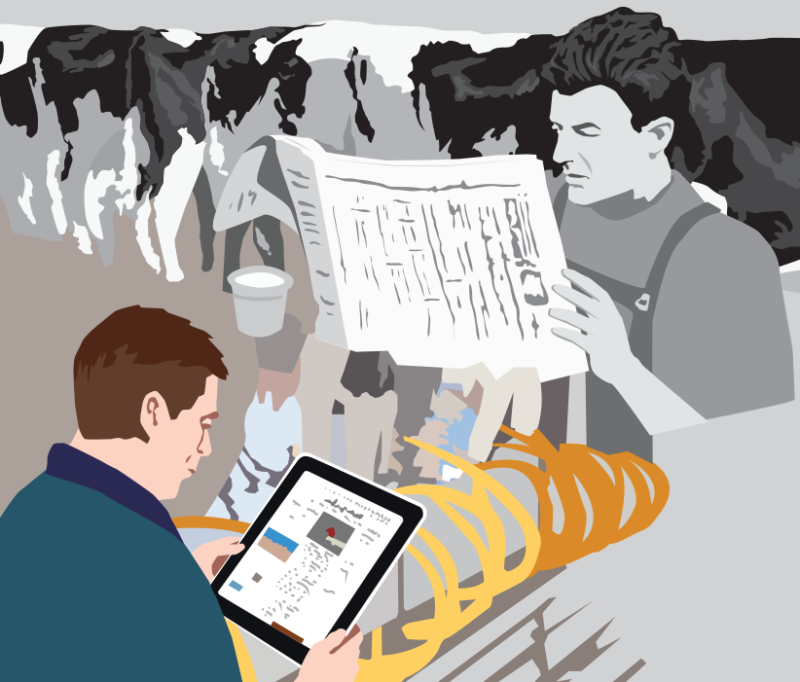On June 4, 2022, the Black Eyed Peas were rocking away to 26,000 people in Pearse Stadium in Galway, Ireland. They had everyone on their feet, dancing, swaying their arms and singing along to their biggest hits when will.i.am grabbed the mic and declared: “The prettiest girls in the U.K. are in Ireland!”
26,000 people stopped dancing. Then the boos started.
Having lived in the country for 12 years, I tell visitors that there is only one transgression that will get them in trouble: Do not mistake the Republic of Ireland for being in the U.K. It’s not taken well and for good reason.
With the Anglo-Norman invasion of Ireland in 1169, the Irish would be under English rule for the next 800 years. Irish chieftains had to submit to the Crown – until they were forced into exile during the Flight of the Earls in the early 17th century. English leaders sought cultural hegemony as a way of controlling the native population, culminating in the Penal Laws. With a series of decrees, the first in 1695, Irish Catholics could not own land, possess weapons, enter high-paying professions, speak Irish, play Irish music or engage in Irish dance. The Penal Laws sought to eliminate Irish culture and ensure that those not loyal to the Crown would remain poor and powerless.
Naturally, agriculture was the way that most Irish Catholics sustained themselves. Because they could not own land, they had to rent it from the Protestant Ascendancy – the wealthy class, most of whom, if not directly English, had English ancestry. These landlords typically lived in a “big house,” or a mansion-style building with a vast estate. Most of the rural Irish were tenant farmers, growing subsistence crops such as potatoes to feed their families. Protestant landlords could, essentially, charge what they liked for rent, as well as evict any family without recourse.
Although there were armed rebellions, notably in 1641 and 1798, most of the confrontations from Irish Catholics came in the form of clandestine guerilla tactics. In particular, secret agrarian societies became a form of resistance to the dominance of the Protestant Ascendancy. In many ways, the rise of these underground groups was sparked by the cow.
Between 1735 and 1760, there was a significant increase of cattle on the island, all owned, of course, by Protestant landholders. This was partly due to the fact that land used as pasture was exempt from tithes to the Anglican church. During this period, landlords were leasing parcels of ground to tenants at a price well above their value, with the understanding that the tenants could also farm certain common areas. As more landowners raised cattle, however, the common areas were fenced in for grazing, but the landlords did not lower the rent accordingly. As a result, tenant farmers struggled to survive, and many of them were evicted.
Covert meetings and underground organization culminated in the first major outbreak of “agrarian outrage” in November 1761, spreading among some of the southern counties of the island. At first, the aggressors were called “Levellers” by the authorities because they filled in ditches or tore down fences that pastured cattle. Nonetheless, they soon became known as “Whiteboys” because of the white smocks they wore while conducting nighttime missions. They also plowed up pastures, destroyed orchids and sometimes raided big houses for guns or money. Threatening letters were sent to landlords, demanding fairer conditions, and to the local populations, commanding them not to pay tithes to the Anglican church. Three major episodes of Whiteboy activity occurred between 1761 and 1786, each lasting a period of two to six years.
Although the Whiteboys were met with force by the authorities – or sometimes abducted in their beds and beaten – the Protestant Ascendancy could not kill the concept of the secret agrarian society. As the Whiteboys were waning, the “Rightboys,” active from 1785 to 1788, took up a similar cause in some of the same areas as their predecessors. They declared themselves led by a fictitious character named “Captain Right.” Although the Rightboys were eventually subsumed by the national fight against the English, culminating in the 1798 Rebellion, the “Ribbonmen” took on the same role as the Whiteboys and Rightboys for much of the 19th century. They got their name from the ribbon they wore in a buttonhole of their clothes. Another group, the “Molly Maguires,” also spread to Liverpool and the eastern U.S., where they were active among Irish immigrant coal miners in Pennsylvania.
The ability of Irish Catholics to support themselves with farming was the conflict point of a much larger geopolitical situation. Out of it rose the secret agrarian society, complete with oaths and outfits, and made up of farmers risking their lives to take down fences or fill in ditches. In the end, it was a type of revolt that the English couldn’t entirely defeat. Because of that, it can be argued that these groups helped sustain the resistance to their colonizers, before and after failed rebellions, until the Free State was finally won in 1921. Ultimately, the small, disenfranchised farmer was essential to Ireland gaining its independence. It is not surprising that Eamon de Valera, the first president of Ireland, identified the small-scale farmer as the ideal embodiment of Irish society.






